Q
berapa lama tunggu kereta baru proton saga
In Malaysia, the waiting time for a new Proton Saga can vary depending on different factors. Generally, the waiting period may range from a few weeks to several months. This depends on supply and demand, the popularity of the vehicle configuration, and the efficiency of production and transportation. If it's a popular configuration with high market demand, the waiting time may be relatively longer; conversely, if demand is low or supply is ample, the waiting time could be shorter.
Special Disclaimer: This content is published by users and does not represent the views or position of PCauto.
Related Q&A
Q
What is the fuel tank capacity of the Proton Saga?
The Proton Saga has a fuel tank capacity of 40 liters. This design can meet the needs of daily commuting and medium - short distance trips while taking fuel economy into account. As a classic model of a Malaysian local brand, the fuel tank capacity of the Saga matches the fuel consumption performance of its 1.3 - liter engine. Under urban driving conditions, it usually offers a cruising range of about 500 kilometers, and the cruising ability will be further improved when driving on the highway.
It's worth mentioning that the fuel tank capacity is one of the important factors to consider when buying a car. It not only affects the driving distance but also relates to the vehicle's weight distribution and chassis design. For users who often drive long distances, a larger fuel tank means fewer refueling times, while urban users may pay more attention to fuel efficiency. The Proton Saga has found a good balance in this regard, ensuring practicality while maintaining the flexibility and economy of a compact car.
In addition, regular inspection of the fuel tank and fuel system is also important for maintaining the vehicle's performance. It is recommended that car owners follow the official maintenance manual for maintenance.
Q
Does Proton Saga Equip with a reverse camera?
Yes, some models of the Proton Saga are indeed equipped with a reversing camera. It specifically depends on the configuration version you choose. For example, the Premium and ACE versions come with a reversing camera as standard, while the Standard version doesn't have this feature. So, it's recommended to select the appropriate configuration according to your needs and budget before making a purchase. The reversing camera is very useful in Malaysia's traffic environment, especially in narrow parking spaces or crowded streets. It helps drivers see the obstacles behind more clearly, enhancing safety. In addition to the reversing camera, the Proton Saga is also equipped with other practical safety features, such as ABS, EBD, and rear parking sensors. These configurations are quite competitive among vehicles in the same class. If you're interested in automotive technology, you can also learn about the assisted - driving features of models from other brands at a similar price point. For instance, some models may offer a 360 - degree panoramic camera or a blind - spot monitoring system, but these usually appear in higher - end versions or brands. Overall, as an economical and practical family car, the Proton Saga offers configurations that match its price in terms of safety and convenience, making it suitable for the daily needs of Malaysian consumers.
Q
Does Proton Saga Equip with ABS?
Yes, some models of the Proton Saga are indeed equipped with the Anti-lock Braking System (ABS), which specifically depends on different versions and years. For example, the 2023 Proton Saga Premium version comes standard with ABS, while older base versions may not have this feature. It is recommended to check the specific configuration list before purchasing a car to confirm. ABS is an important safety technology that can prevent the wheels from locking up during emergency braking, helping the driver maintain control of the vehicle, especially on slippery roads, and it's very practical for Malaysia's rainy climate.
In addition to ABS, modern cars are often equipped with systems such as EBD (Electronic Brakeforce Distribution) and BA (Brake Assist), which together enhance driving safety. As a national brand in Malaysia, Proton has always been committed to improving the safety performance of its vehicles. In recent years, new cars have made significant progress in safety configurations. Consumers can choose the appropriate version according to their budget and needs.
Q
What is the safety rating of the Proton Saga?
The safety configuration of the Proton Saga provides a certain level of safety assurance. It comes standard with an ABS anti-lock braking system, which can prevent the wheels from locking up during emergency braking, allowing the vehicle to maintain a certain steering ability and avoid losing control. The seat-belt reminder function can promptly remind the driver to fasten the seat belt. It is also equipped with 2 airbags, namely the driver-side and front-passenger-side airbags, which can reduce the injuries to the driver and passengers in the event of a vehicle collision.
In addition, the ISO FIX child-seat anchor points make it easy to install a child seat, ensuring the safety of children in the car. Some versions also feature functions such as electronic stability control and hill - start assist. Electronic stability control helps keep the vehicle stable while driving, and hill-start assist can prevent the vehicle from rolling back when going uphill.
However, the specific safety ratings may vary depending on the standards and testing methods of different evaluation agencies.
Q
What is the fuel average of Proton Saga?
The official combined fuel consumption of the Proton Saga is 6.7L per 100km. This car is positioned in the A-Segment. It is equipped with a 1.3L naturally aspirated engine, and its power output can meet the needs of daily driving. With such fuel consumption performance, it has certain advantages among models in the same class. It can help car owners save on fuel expenses, making it suitable for consumers who attach great importance to fuel economy. Whether it's for city commuting or short trips, fuel costs can be controlled, thus reducing the burden of car use.
Q
What is the top speed of a Proton Saga?
The maximum speeds of Proton Saga models vary across different years and versions. The 2018 Proton Saga 1.3 Standard MT has a maximum speed of 160 km/h, while the 2018 Proton Saga 1.3 Standard CVT, Executive CVT, and Premium CVT all have a maximum speed of 155 km/h. Information regarding the maximum speed is not mentioned in the data of models from 2019 - 2023. These figures are the officially announced theoretical maximum speeds. In actual driving, it's quite difficult to reach these speeds due to various limiting factors such as road conditions, vehicle load, driving habits, and traffic regulations.
Q
Which country made the Proton Saga?
The Proton Saga is a car made in Malaysia. Proton, a domestic car brand, was established in 1983 under the leadership of Mahathir, the current Prime Minister of Malaysia. In 1985, Proton's first model, the Proton Saga, made its debut. The "Saga" in the car's name refers to the Adenanthera pavonina, a common type of seed in Malaysia, and it was named by a retired military man. Proton has a complete automobile production line and independent R & D capabilities. As an important model of Proton, the Proton Saga is naturally a representative product made in Malaysia, and it has witnessed the development of the Malaysian automotive industry.
Q
What is VVT in Proton Saga?
VVT stands for Variable Valve Timing, which refers to the engine's variable valve timing technology. On the Proton Saga, this technology can adjust the intake (exhaust) volume, valve opening and closing time, and angle according to the engine's operating conditions, so as to optimize the amount of incoming air and improve combustion efficiency.
Its working principle is to install a solenoid valve on the engine camshaft. By controlling the switch of the solenoid valve, the opening and closing time of the valves is adjusted to control the intake volume. At low speeds, VVT allows the valves to open earlier and close later, increasing the intake volume, enhancing combustion efficiency, boosting power, and reducing fuel consumption. At high speeds, it enables the valves to open later and close earlier, reducing the intake volume, improving engine efficiency, and reducing noise and vibration. However, the VVT technology has the drawback of insufficient torque at medium speeds. Therefore, when choosing a car, consumers should consider whether to opt for the Proton Saga model equipped with VVT technology based on their own driving habits and needs.
Q
Is Proton Saga fuel-efficient?
As one of the most popular economy cars in Malaysia, the Proton Saga's fuel economy performance meets the mainstream level of vehicles in this class. It is equipped with a 1.3L naturally aspirated engine paired with a 4-speed automatic or 5-speed manual transmission. The officially announced fuel consumption data is 5.6 to 6.0 liters per 100 kilometers (the actual fuel consumption may vary slightly depending on driving habits and road conditions). It is a relatively fuel-efficient choice for daily city commuting or long-distance driving.
The car adopts a lightweight body design and an optimized powertrain tuning, which further improves fuel efficiency. It is especially suitable for the usage scenarios in Malaysia with many traffic lights and congested roads. To further enhance the fuel-saving effect, it is recommended to conduct regular maintenance (such as replacing the air filter and using the recommended viscosity of engine oil) and develop driving habits like smooth acceleration and anticipatory deceleration.
In comparison with other models in the same class, its fuel consumption performance is similar to that of competitors like the Perodua Bezza and Honda City. However, the Saga has become a popular choice among budget-conscious consumers thanks to its more affordable price and lower maintenance costs. It's worth noting that the Proton Saga also meets the relevant standards of the EEV (Energy-Efficient Vehicle) certification launched by the Malaysian government, which indirectly confirms that its fuel economy has reached the industry's energy-saving requirements.
Q
What is the body type of the Proton Saga?
The Proton Saga is a four-door sedan. This is the most classic body style for entry-level family cars in Malaysia. Its structure includes a separate engine compartment, passenger compartment, and luggage compartment, which combines daily practicality with fuel economy. As Proton's longest-standing car series, the Saga has always adopted a three-box design since its launch in 1985. The current third-generation model (2023 version) continues this tradition. The body dimensions are 4,413mm×1,689mm×1,491mm, with a wheelbase of 2,465mm, providing spacious seating and a trunk capacity of 395 liters.
Three-box sedans are highly favored in Malaysia. This is mainly due to their well-sealed cabins, which are suitable for the tropical rainy climate, and their storage layouts that are more suitable for family trips. At the same time, this type of vehicle also maintains a relatively high residual value in the second-hand car market. It's worth noting that competitors in the same class, such as the Perodua Bezza, also use a similar three-box structure. However, the Saga has an advantage in terms of ride comfort thanks to its longer wheelbase and more mature chassis tuning. This body style also gives it better stability than hatchbacks when driving at high speeds.
Latest Q&A
Q
What is the Weel Size of BMW IX?
As the flagship electric SUV of the brand, the BMW iX offers two wheel sizes in the Malaysian market. They are the standard 20 - inch aerodynamic wheels (Style 868), and the optional 21 - inch (Style 909) or 22 - inch (Style 1023) wheels. The specific sizes may vary depending on the vehicle model version (such as xDrive40 or xDrive50) and optional packages. When choosing larger wheels, it's important to note that while they can enhance visual impact and handling, they may slightly affect the driving range (due to increased rolling resistance), while smaller wheels focus more on energy - efficiency. Malaysian consumers can consider local road conditions when making a purchase. For example, when frequently facing urban congestion or suburban roads, the 20 - inch wheels paired with tires of a higher aspect ratio can provide better comfort. If you prefer a sporty style, it is recommended to choose wheels larger than 21 inches. All wheels are made of lightweight aluminum alloy and are optimized for wind resistance, meeting the strict efficiency requirements of electric vehicles. Owners can also use the configurator on the BMW Malaysia official website to check the actual impact of different wheel sizes on the vehicle's driving range data in real - time.
Q
What is the Energy Consumption of BMW IX?
As a pure - electric SUV, the energy consumption of the BMW iX is measured by electricity consumption rather than the fuel consumption of traditional gasoline vehicles. According to official data, the combined electricity consumption of the BMW iX xDrive40 under the WLTP test standard is approximately 20.3 - 22.5 kWh/100km, while that of the high - performance iX xDrive50 is around 21.5 - 23.5 kWh/100km. The specific figures may fluctuate depending on driving habits, road conditions, and climate.
For users in Malaysia, due to the tropical climate which may increase the frequency of air - conditioning use, the actual electricity consumption may be slightly higher than the standard value. However, the heat - pump air - conditioning system installed in the BMW iX can effectively optimize energy utilization and reduce the impact of high - temperature conditions on the vehicle's range.
Moreover, electric vehicles are more efficient than gasoline vehicles in urban stop - and - go traffic because the kinetic energy recovery system can convert the energy generated during deceleration into electricity for storage. If converted into equivalent fuel economy, based on the electricity prices in Malaysia, the per - kilometer driving cost of the BMW iX is significantly lower than that of gasoline vehicles in the same class.
It's worth noting that electric vehicles have lower maintenance costs and are not affected by changes in Malaysia's fuel subsidy policy, showing obvious long - term economic advantages. It is recommended that users choose a charging plan according to their daily commuting distance, such as using the ChargeNow charging network in cooperation with BMW or a home slow - charging pile.
Q
Is BMW IX Worth Buying? Check out Its Features Here
As a luxury electric SUV, the BMW iX is truly worth considering in the Malaysian market. It is equipped with the fifth - generation eDrive electric drive technology and offers two versions, xDrive40 and xDrive50, with a range of up to 425 kilometers and 630 kilometers respectively (WLTP standard), which meets the needs of local users for both urban commuting and long - distance travel. Its CLAR platform is specifically optimized for electric vehicles. Paired with an adaptive air suspension and rear - wheel steering technology, it can balance comfort and handling performance, especially suitable for the diverse road conditions in Malaysia. The interior uses recycled materials and a curved screen design, combining a sense of technology with environmental protection concepts. Meanwhile, intelligent features such as automatic parking and AR navigation also enhance convenience.
It should be noted that the charging infrastructure in Malaysia is still being improved. It is recommended to confirm the coverage of charging piles around your place of residence before purchasing a car. At the same time, compare the after - sales policies and charging network support of competing models in the same class, such as the Mercedes - Benz EQS SUV or the Tesla Model X. Overall, the iX is competitive in terms of performance and luxury experience, but it should be comprehensively evaluated based on your personal budget and usage scenarios.
Q
When is the Launch Date of BMW IX?
The official launch time of the BMW iX in Malaysia was December 2021. This all - electric SUV is an important new energy model launched by BMW in the Southeast Asian market, demonstrating the brand's core technology in the field of electrification. The iX is equipped with the fifth - generation eDrive electric drive system, offering two versions: xDrive40 and xDrive50. Their ranges can reach up to 425 kilometers and 630 kilometers respectively (WLTP standard), and it supports fast - charging of up to 200kW, which can charge the battery from 10% to 80% in 40 minutes.
For Malaysian consumers, the launch of the iX enriches the local high - end electric vehicle options. Its intelligent cockpit is equipped with a curved screen and the iDrive 8 system, and the body uses carbon fiber composite materials to improve lightweight performance. It's worth mentioning that the preferential policies of the Malaysian government on electric vehicle import tariffs (such as the complete exemption of import duties in 2023) have further lowered the purchase threshold for the iX. Meanwhile, BMW Malaysia has also expanded the charging network, deploying DC fast - charging stations in major cities.
As the flagship product of BMW's "electrification strategy", the localization services of the iX also include an 8 - year/160,000 - kilometer high - voltage battery warranty, providing long - term vehicle - using guarantees for consumers.
Q
When is the Release Date of BMW IX?
The official release date of the BMW iX was in November 2021. As an important model for BMW in the electric vehicle field, this all - electric SUV has been launched in multiple markets around the world. It was officially introduced to the Malaysian market in the third quarter of 2022, and the specific timing may vary slightly due to regional configurations or policy adjustments.
The iX is equipped with BMW's latest fifth - generation eDrive technology, offering two power versions: xDrive40 and xDrive50. The ranges can reach up to 425 kilometers and 630 kilometers respectively (WLTP standard). It also comes with an advanced autonomous driving assistance system and the iDrive 8.0 intelligent interaction system.
For Malaysian consumers, the introduction of the iX not only enriches the local choices of electric vehicles but also shows BMW's strength in the field of sustainable mobility. Meanwhile, the Malaysian government's tax incentive policies for electric vehicles (such as import tax exemptions and road tax concessions) may also make the iX more appealing.
If you're interested in the iX, it's recommended to consult your local BMW dealer for the latest delivery times and test - drive arrangements. You can also compare it with other electric models in the same class, like the Mercedes - Benz EQS SUV or the Audi e - tron, to make a choice that better suits your needs.
View MoreRelated News
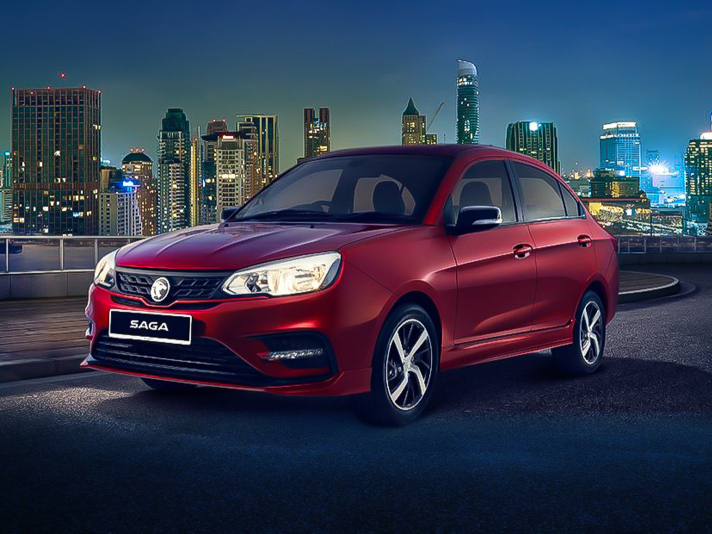
Proton Saga Interior Review: Affordable Yet Stylish for Everyday Use
WilliamJul 17, 2025
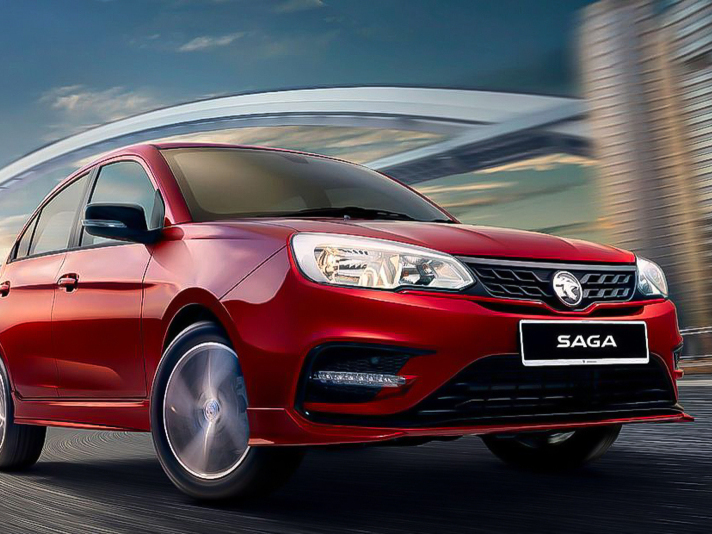
2025 Halfway Mark: All-New Proton Saga Coming Soon!
JohnMay 30, 2025
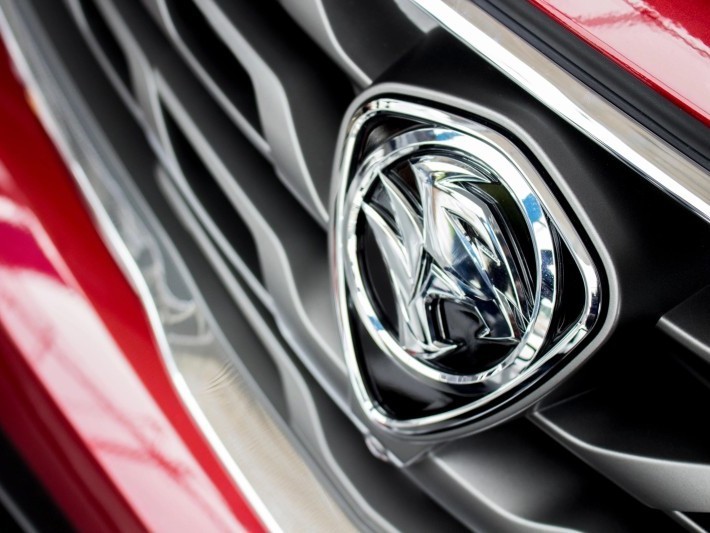
Proton Recorded Sales of 13,918 Vehicles in March, Marking a Significant MOM Increase of 23.9%
AshleyApr 10, 2025
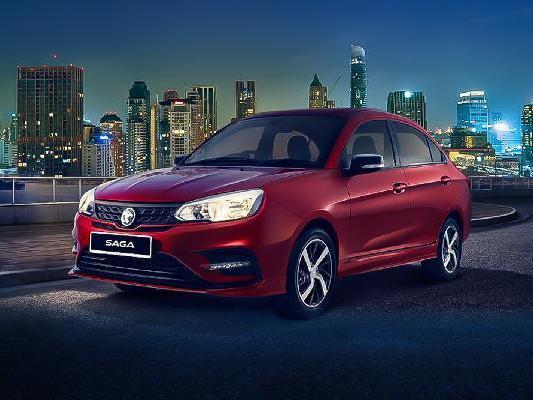
Proton Saga: A Clear Overview of Configurations and Costs of models
LienMar 25, 2025

Latest news on the 2025 Proton Saga, with ADAS support provided by iMotion Technology
JohnJan 6, 2025
View More








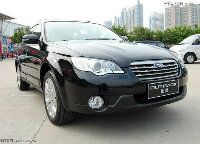

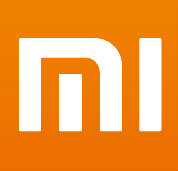

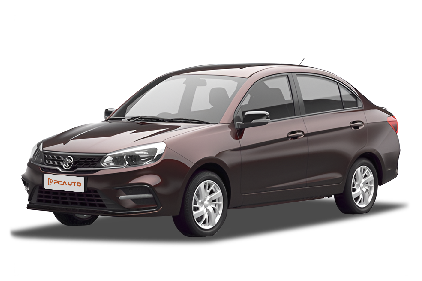

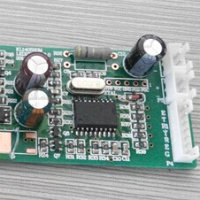



Pros
Cons